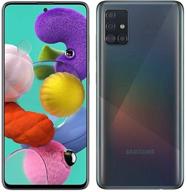
Review on Samsung Galaxy S20 FE G780G 4G Dual 128GB 8GB RAM Factory Unlocked International Version - Cloud Navy (GSM Only) by Dimitar Kostakev ᠌

Well done, but I won't buy any more.
Because I take a lot of images and movies of my family, the most important feature of a smartphone for me is a screen, followed closely by a camera that is of the greatest possible quality. For this reason, I almost always go with a flagship device from Samsung. Were S5, S7, S9 +, and S10 + (he is currently practicing with his wife). When it comes to the quality of the camera, I found that other manufacturers' phones did not deliver the same level as the Samsung S-series does (especially in terms of color reproduction). This time around, the budget was between 35,000 and 40,000, and it allowed for either the already extremely obsolete but still good S9+ or S20fe camera to be purchased. After going over all of the evaluations, I came to the conclusion that the most recent one would cost 39.000. Consequently, point by point: 1. Camera. In this regard, there is no room for disappointment! We specifically compared it with my wife's S10 Plus, and we found that the quality of the photo on the larger main sensor (1.8 microns vs. 1.4 pixels) is significantly higher (the photos were uploaded to a computer, and they appeared on an excellent monitor). I was very happy with how the night filming turned out because this is where the advantages really stood up. It is essential for us that it is able to analyze the features of children's faces more effectively and appropriately transmit gradations of tone. The video is also a treat to watch, with outstanding stability; but, the sound recording is significantly superior. 2. Screen. Disappointed. Even though it is an AMOLED display, after the S10+ the colors become more vibrant. Even when compared to the previous generation of the S7, it falls short. A50 level. 3. SoC. Previously, I had a healthy amount of skepticism regarding criticism leveled at Exynos CPUs. As the owner of Exynos flagships, I had never had any issues in top games (apart from the fact that the case was warm), and I always played at the highest possible settings. However, everything turned out to be significantly worse this time: currently, when the battery temperature reaches 40 degrees, the phone's GPU frequency lowers by 2.5 times (this was tested using the benchmark). Additionally, the screen may be dimmed down to a brightness of fifty percent! And the temperature of the device hits exactly 40 degrees after only four minutes of playing the game. Why are there games when even the most basic installation of an application can result in a dimming of the screen? I have no idea why, in addition to throttling, reducing the brightness is an option, as this causes issues even when the device is being used for its intended purpose. It should come as no surprise that the device is not suited for playing demanding games (to reiterate, Samsung's prior flagships did not experience any issues of this nature).
- 1. When it comes to value for money, cameras are indisputably the greatest option (additional information may be found in the comments). This machine was the one I went with because of its camera capabilities. 2. The performance of the processor in common tasks, such as the speed of the interface, browser, gallery, and banking applications, should be at the flagship level. But only up until the point where it comes to jobs that require a lot of resources and games that are demanding. (please see the comments for further information). 3. Stereo speakers produce sound that is both extremely loud and extremely detailed at high frequencies. Low frequencies, at a level roughly equivalent to the average. 4. I am relieved that they did not eliminate the moisture protection or the wireless charging options. 5. Despite being made of plastic, the body has a sturdy feel to it.
- 1. Display (additional information can be found in the comment section). 2. Extremely poor CPU throttling (additional information can be found in the comments). 3. The typical amount of time that the screen is visible is five hours if the screen brightness is set to 90 percent and the scanning rate is set to 60 hertz. This is based on my own experience, as I rarely play video games but do capture a lot of photos and movies. 4. 120hz did not even bother to try, as they are aware that their efforts will result in an even bigger decrease in running time and throttling of the processor. 5. The design and the tactile sensations of the case do not produce the delight that you often feel when you pick up a flagship device (the same S10+). This is the case despite the fact that the S10+ is a flagship device.
New products
Comments (0)
Similar reviews
Top products in 📱 Cell Phones

📱 Huawei P40 Lite JNY-LX1 International Version - 128GB Crush Green, Dual 4G and 6GB RAM

297 Review

Renewed Samsung Galaxy A51 with 128GB Storage, 6.5-inch Display, Quad 48MP Camera, and Unlocked A515U Model in Black

289 Review

💫 Renewed Samsung Galaxy A71 5G Fully Unlocked (128GB, Prism Cube Black)

354 Review

Xiaomi Camera Gaming Processor Unlocked

397 Review
Another interesting products

Perixx Peripad-202H Black Wired Numeric Keypad With X-Scissor Keys, 2 USB Hubs, And Tab Key For Enhanced Productivity

44 Review

Keyboard Cover For HP Pavilion X360 14 14-Dk 14M-Dh 14-Dq/Dh 14-Fq 14-Ce/Cf 14T-Dh200 14-Dq0070Nr 14-Fq1025Nr 14-Dq0011Dx/Dq0004Dx/Dq0002 14-Dh2011Nr Fq1097Nr 14T-Dq300 14Z-Fq000 14-Cb185Nr, GPink

39 Review

NinjaBatt High Performance Battery For Toshiba A665 And L755 Series - 6 Cells/4400MAh/48Wh

40 Review

Sennheiser HD 206 Closed-Back Over Ear Headphones - Discontinued Model

195 Review


